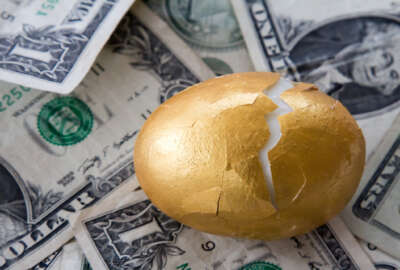
What’s up (or not) with the TSP’s C and S funds?
Day trading with your retirement nest egg can be exhilarating and disappointing, sometimes at the same time. Guessing when the market has peaked or bottomed ou...
Day trading with your retirement nest egg can be exhilarating and disappointing, sometimes at the same time. Guessing when the market has peaked or bottomed out is tough, even using the best “system.” And in the end, it’s still guesswork.
While 2017 was a great year for the stock market, this year’s up and down action has made many Thrift Savings Plan investors nervous. It is one thing to be in it for the long haul but another to buy shares in the C, S and I funds when the road gets rocky.
Judging the market based on a couple, even a series of good or bad days, can be tricky. Take Wednesday, please!
That was when the US stock market, as measured by the Wilshire 5000 Total Market Index was up 648.25 points. That translates into a 2.34 percent increase. On paper the market was up $675 billion. And after having a number of rough patches earlier this year the US stock market rose for the third day in a row this week. It was the fourth time in the last (as of Wednesday) trading days.
Wednesday’s increase was also the second biggest gain of 2018 and the market’s best-day since March 26, according to the index.
Based on Wednesday’s performance, for the month of November the market was up 1.12 percent or about $325 billion. But for the quarter the index is down 6.5 percent for a paper loss of $2.1 trillion.
On the other hand for the year, the index is up 1.86 percent as of mid-week, or approximately $575 billion.
Since the market’s Sept. 20 high, the Wilshire 5000 index, as represented by the TSP’s large cap C fund and small cap S fund, was as of market close on Wednesday down 7.13 percent or approximately $2.4 trillion.
Since Inauguration Day on Jan. 20, 2017, through Wednesday of this week the Wilshire 5000 index had gained $195 trillion. It was also up $7 trillion since Election Day, Nov. 8, 2016.
More numbers
The index as of Wednesday is up 312.53, or $25.7 trillion from the Great Recession low of March 9, 2009.
The numbers are telling, but what they tell depends on your outlook, fears and risk tolerance. So are you heading for the super-safe G fund until things get better? Or are they better already and likely to stay that way? How are you reading the financial tea leaves and what’s your plan? Let me know at mcausey@federalnewsnetwork.com
Nearly Useless Factoid
By Amelia Brust
The indent on the bottom of wine bottle is called a punt and the wire cage that keeps the cork in a bottle of champagne is called an agraffe.
Source: Mental Floss
Copyright © 2024 Federal News Network. All rights reserved. This website is not intended for users located within the European Economic Area.
Mike Causey is senior correspondent for Federal News Network and writes his daily Federal Report column on federal employees’ pay, benefits and retirement.
Follow @mcauseyWFED
Related Stories





